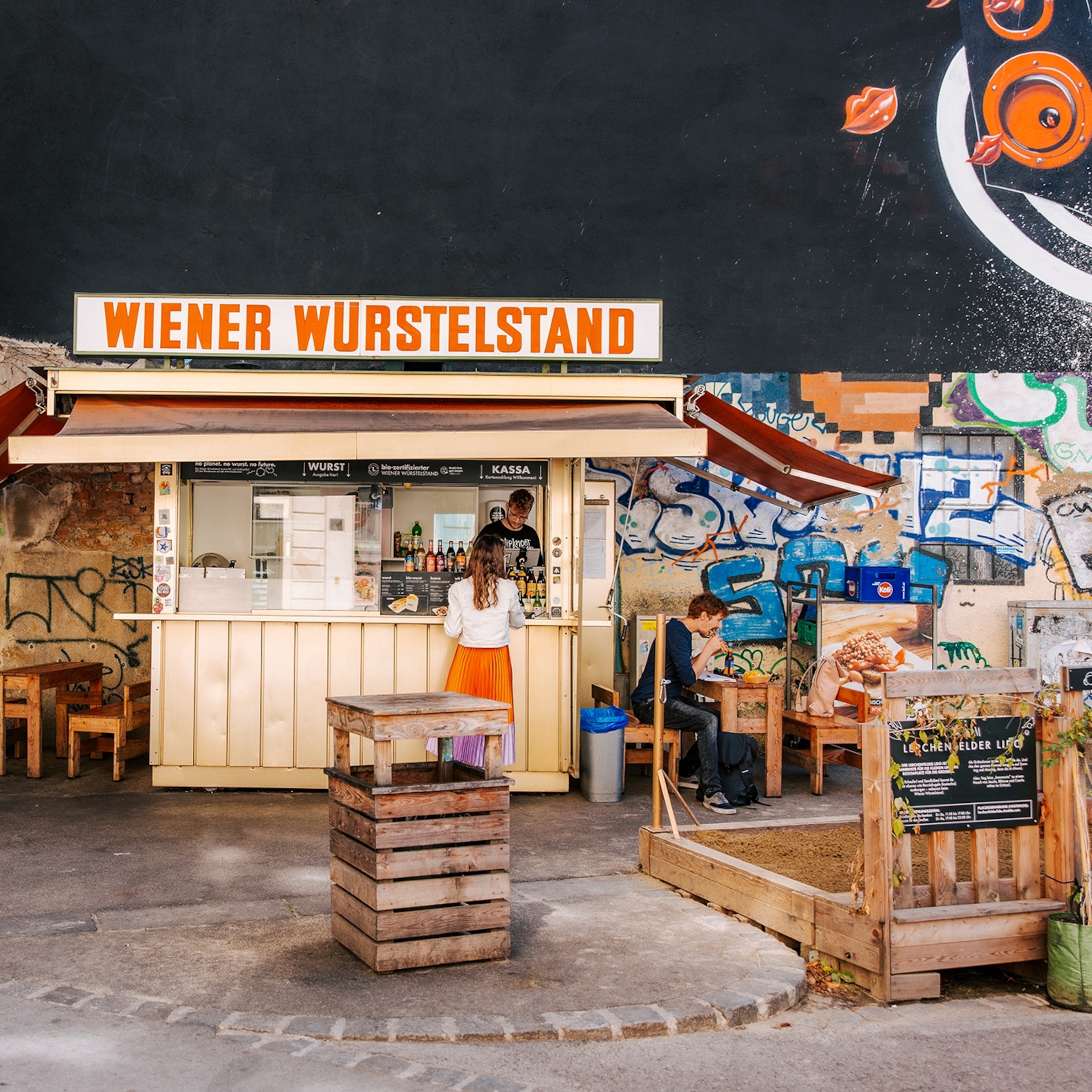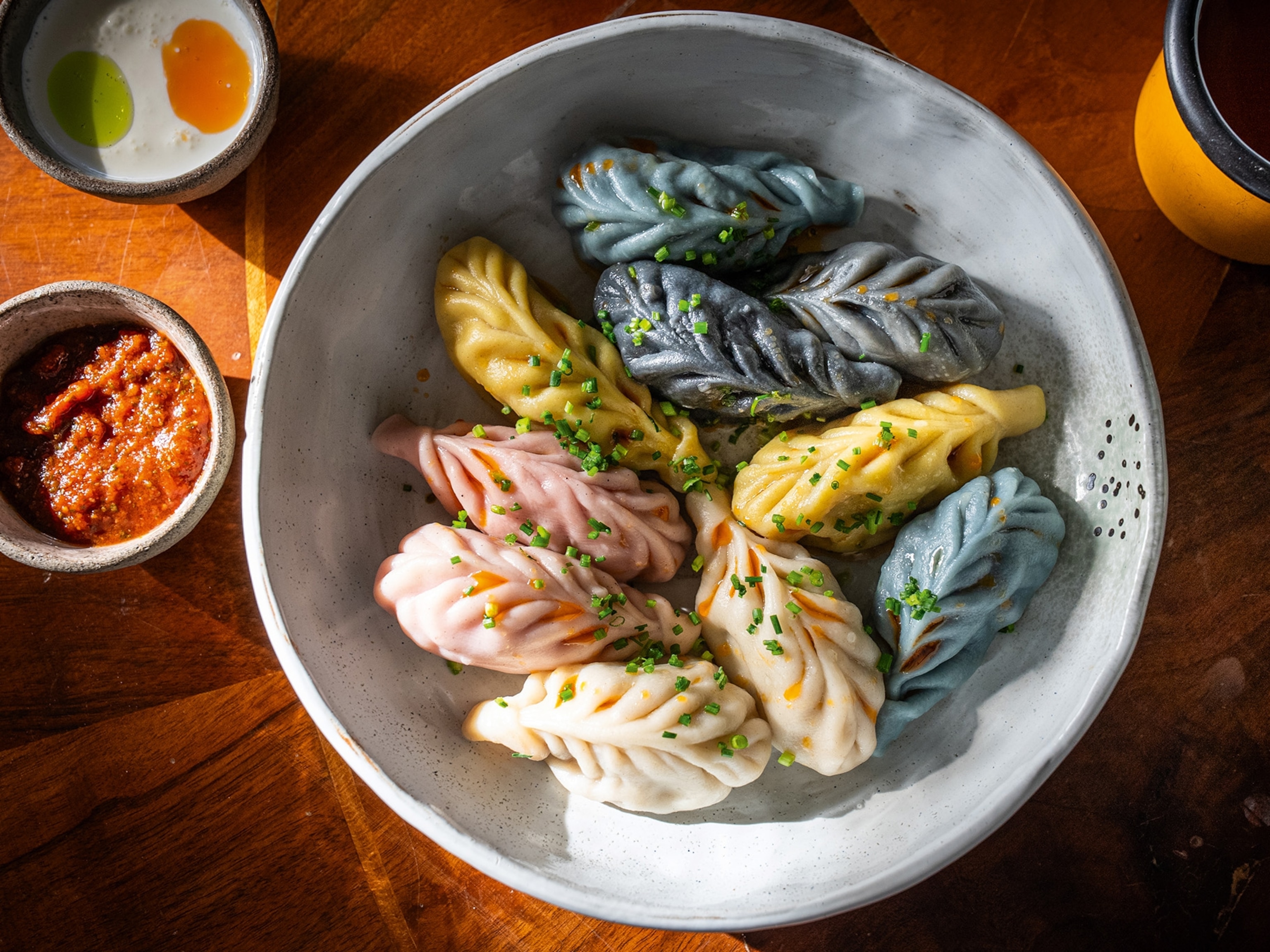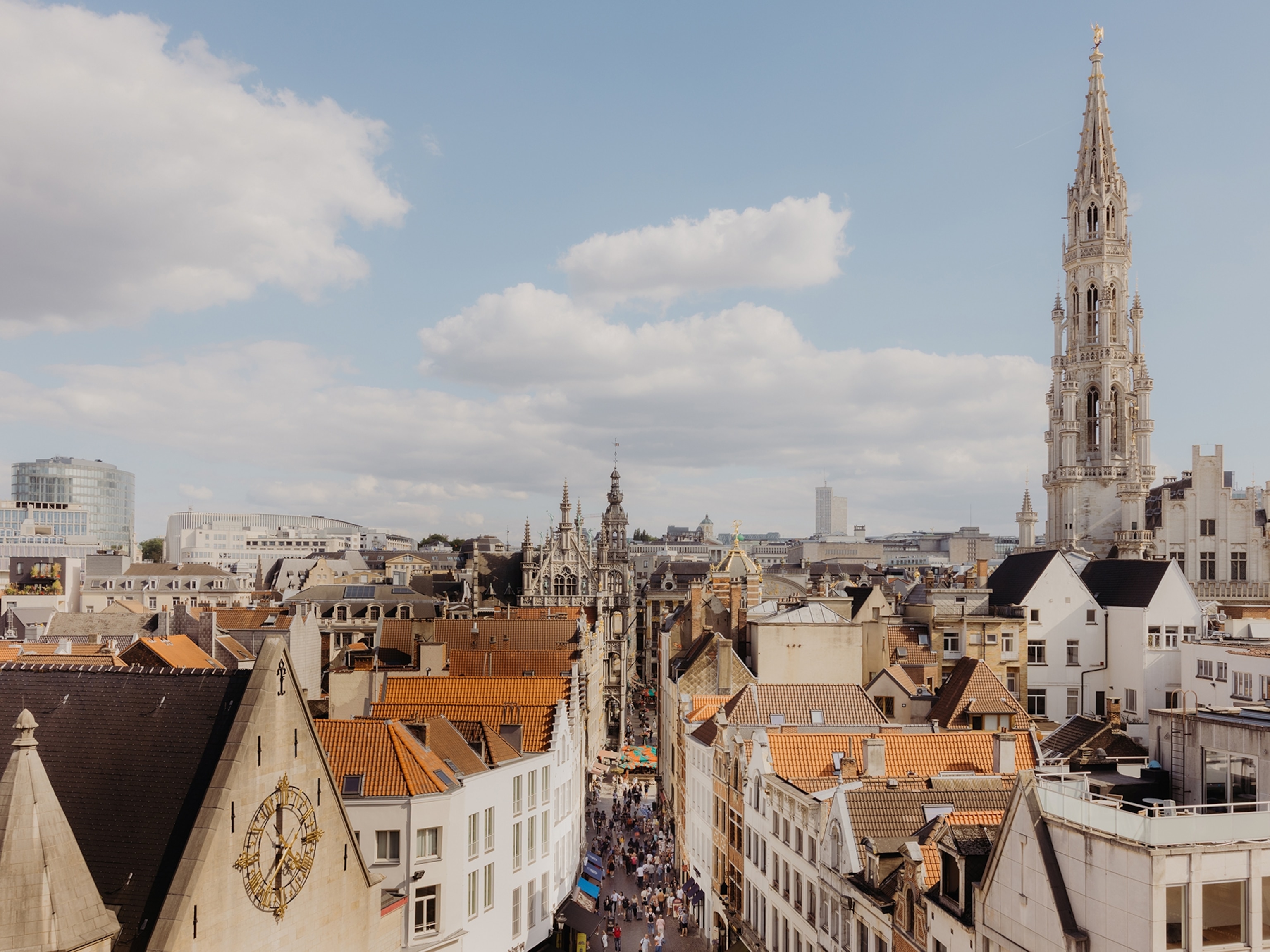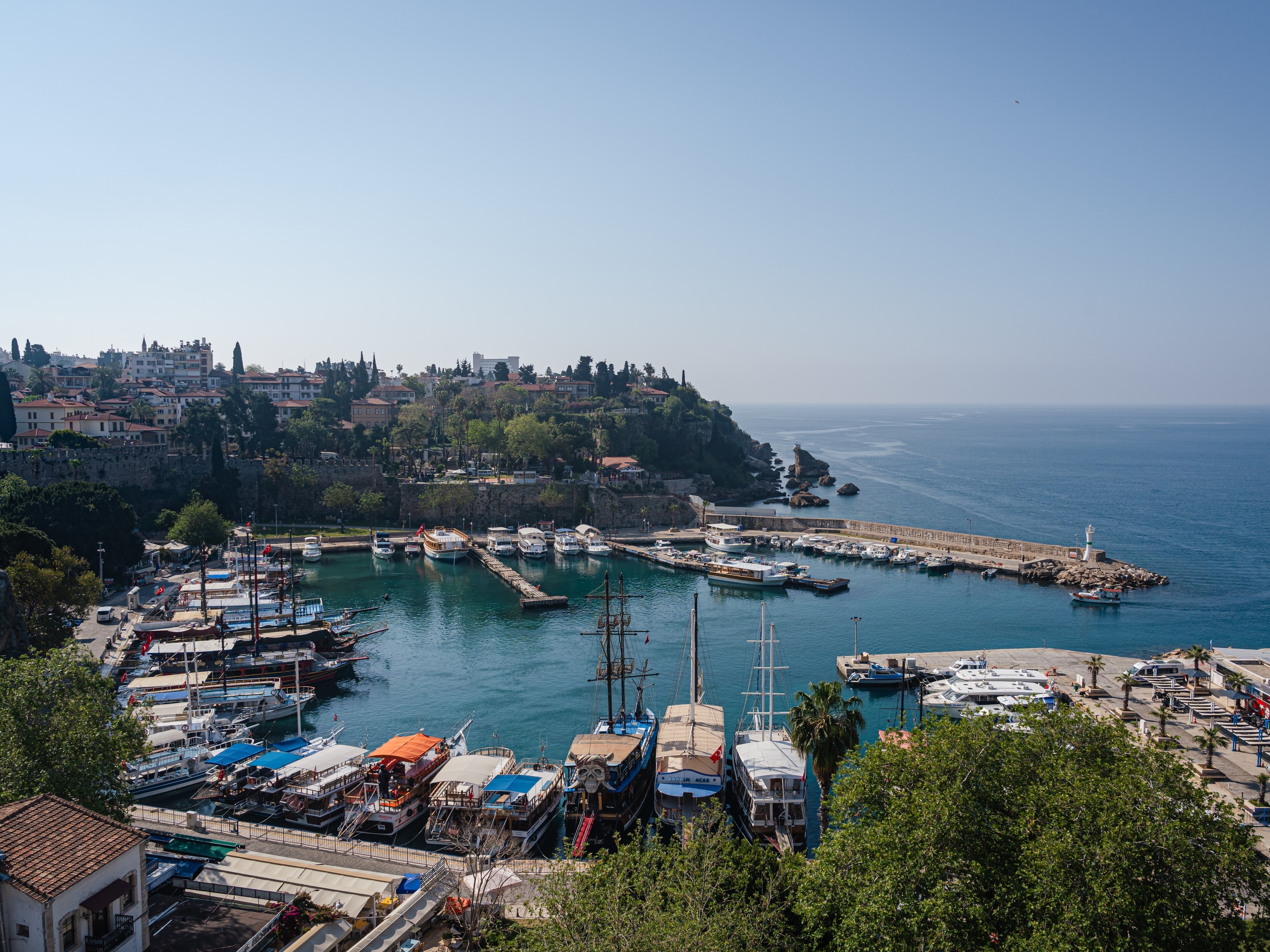
Explore the Indian city of Lucknow, whose streets are alive with smoke and flame
In Lucknow, meat takes centre stage. A kebab isn’t a simple skewer but a melt-in-the-mouth dish with noble origins; buffalo is slow-cooked overnight, ready for breakfast, while the perfect biryani can reduce a restaurant to silence.
The charcoal grills burn strong in Lucknow’s failing light. The streets are alive with smoke and flame, the call to prayer and the delicate scent of spiced meat. Ajay Jain, a Lucknowi who grew up as a vegetarian, is guiding me through the old city to Phool Wali Gali (the ‘lane of flowers’), home of Tunday Kababi, which has been serving its legendary buffalo galawati kebabs on this site for more than a century.
“The first time I ever ate meat,” Ajay says, “it was the Tunday kebab. And I thought, why have I never eaten something so good before? I’ve wasted my life.”
My own first taste of Tunday was in Delhi, in 2003. By then, anyone who was anyone had Tunday catering their wedding. At one such shaadi I dined on the famous kebab. But I’d also danced and drank, and the next day, while I could recount my enthusiasm for the dish, I struggled to remember the taste.
From then on, the promise of Lucknow burned like a slow fever in my brain. I began to believe that no dish in Delhi could hold a candle to those from the noble city to the east. And with good reason: it was the old capital of Awadh, the epicentre of Ganga-Jamuni tehzeeb — a culture fusing elements from Hindu and Muslim communities. The region’s 18th- and 19th-century rulers, the Nawabs, were free from their erstwhile Mughal lords yet practically powerless under the British, so they turned their gazes inward. Poetry, theatre, dance and architecture flourished, as did cuisine. Royal cooks earned salaries on a par with government ministers and competed with one another using Mughal, Persian, European and local influences to deliver the most delicious, elaborate, unusual meals. From 1775 to 1856, Lucknow may well have been the culinary centre of the earth.
We arrive at Tunday as darkness falls, its rugged shopfront dominated by a vast copper pan riding glowing coals. The daily performance is under way; taking place above the pans is a dance of hands, some adding freshly shaped patties, others flipping the kebabs as they shallow-fry. Smoke from the coals imparts a certain flavour, but it’s the spice mix that holds the real charm. Minced buffalo meat is kneaded into a paste with, it’s said, no fewer than 160 spices, their exact identity and ratio a closely guarded secret.

Though Tunday’s founder, Haji Murad Ali, made his galawati for the poor, the dish is part of Lucknow folklore, linked to the first Nawab ruler Asaf-ud-Daula who, toothless in his advancing years, is said to have ordered his kitchen to come up with a version he wouldn’t have to chew — one that would literally melt in the mouth. Raw papaya was, and remains, the key: the enzyme papain acts as a tenderising agent and turns the galawati into more of a finely spiced pâté than what might be considered a kebab in the West. The galawati developed over the years, and Tunday’s is now considered by many to be its apogee.
Four small patties are set in front of us, accompanied by side dishes of raw onion and a hot paratha flatbread. I tear off a piece of paratha, pinch a small handful of spiced meat, adding the onion for tang and crunch. Then I pop it in my mouth. It’s a punch, an explosion of flavour, an umami distillation of Persian campfires and royal whims. We clear the plate, order a second, then a third. No one’s surprised by our enthusiasm.
A hot breakfast
But Tunday isn’t the only show in town. The previous night we’d passed Raheem’s, one among a string of restaurants on a busy thoroughfare in the old city. “You must eat here,” Ajay had said, and a little research told me the city agreed. Raheem’s is the place for nihari, a hearty buffalo shank stew full of turmeric, cinnamon, nutmeg and clove, and whose name is derived from the Arabic ‘nahar’, meaning morning. This is on account of the meat being braised, sealed with spices and then cooked overnight in a pot set over a low fire before being served for breakfast. For centuries it’s been the daily sustenance of the labouring classes, the nap-inducing comfort food of the Nawabs and, charmingly, a local remedy for the common cold.
It’s chilly enough the next morning when I take my seat. Raheem’s bleary eyed staff, so animated at night, embody the aura of unreality that comes with working across the dawn. Owner Haji Zubair Ahmad’s great grandfather started this place in 1890. And perhaps there’s a little of that year on the plate, for part of the romance of nihari is the taar, a portion of the previous day’s batch added to the next; a practice that, in theory, takes you back to the very first pot.
Is that happening here? Zubair smiles. He plays his cards close to his chest and won’t reveal much, least of all the recipe. He politely cuts short my questions and asks me to sit and eat instead. I do as I’m told, and watch the young workers rolling kulcha dough while the tandoor-wala, Raazi Ahmed, expertly slaps it against the inner wall of the glowing drum. To eat nihari without kulcha, a partly leavened flatbread, is unforgivable.

After a final sprinkling of chopped coriander, green chilli and caramelised onions, the steaming dish arrives — rich, unctuous and deeply comforting, the buffalo chunks yield to the kulcha that in turn soaks up the gravy, glutinous on account of flour, infused with the strength of the meat. I consume it without words, Zubair sending another kulcha to mop up the remains.
I’m tempted to head for a nap, but Mubeen’s is next door, and it’s famous for pasanda seekh kebabs. Only I’m too early — the coals aren’t yet fired. Still, I can see a pan of meaty sauce simmering away at the shop-front.
“Boti kebab,” the owner, Yahya Khan, explains. Really? It’s about as far from a kebab as it gets – unrecognisable, even, from the boti in Delhi, which comes as coal-grilled chunks. He understands my surprise, but Lucknow boti is different, simmered to softness and served like gravy mince with sheermal, a saffron flatbread, to scoop it up.
All of which begs the question: what exactly is a kebab? The first time I was in London, I tried a doner and scoffed. “This isn’t a kebab, it’s a tasty chicken roll.” When I consulted the Oxford English Dictionary, it said, “A dish of pieces of meat, fish or vegetables roasted or grilled on a skewer or spit.”
When I put this definition to the kebabis of Lucknow it provokes a laugh — it makes no sense. So what is it? One person simply says, “Kebab is a starter.” Another: “Something you eat with bread.” Yahya replies, in Urdu too beautiful for my translation, “A kebab is something excellent, with a lot of taste, which makes you smile.”
Mohsin Qureshi, executive chef at Lucknow’s Lebua hotel and the brains behind its excellent Awadhi restaurant, Azrak, thinks over the question. He comes from a long and distinguished line of chefs going back to the days of the much-loved final Nawab, Wajid Ali Shah. And now he’s on a mission to reclaim the forgotten recipes of Awadh.
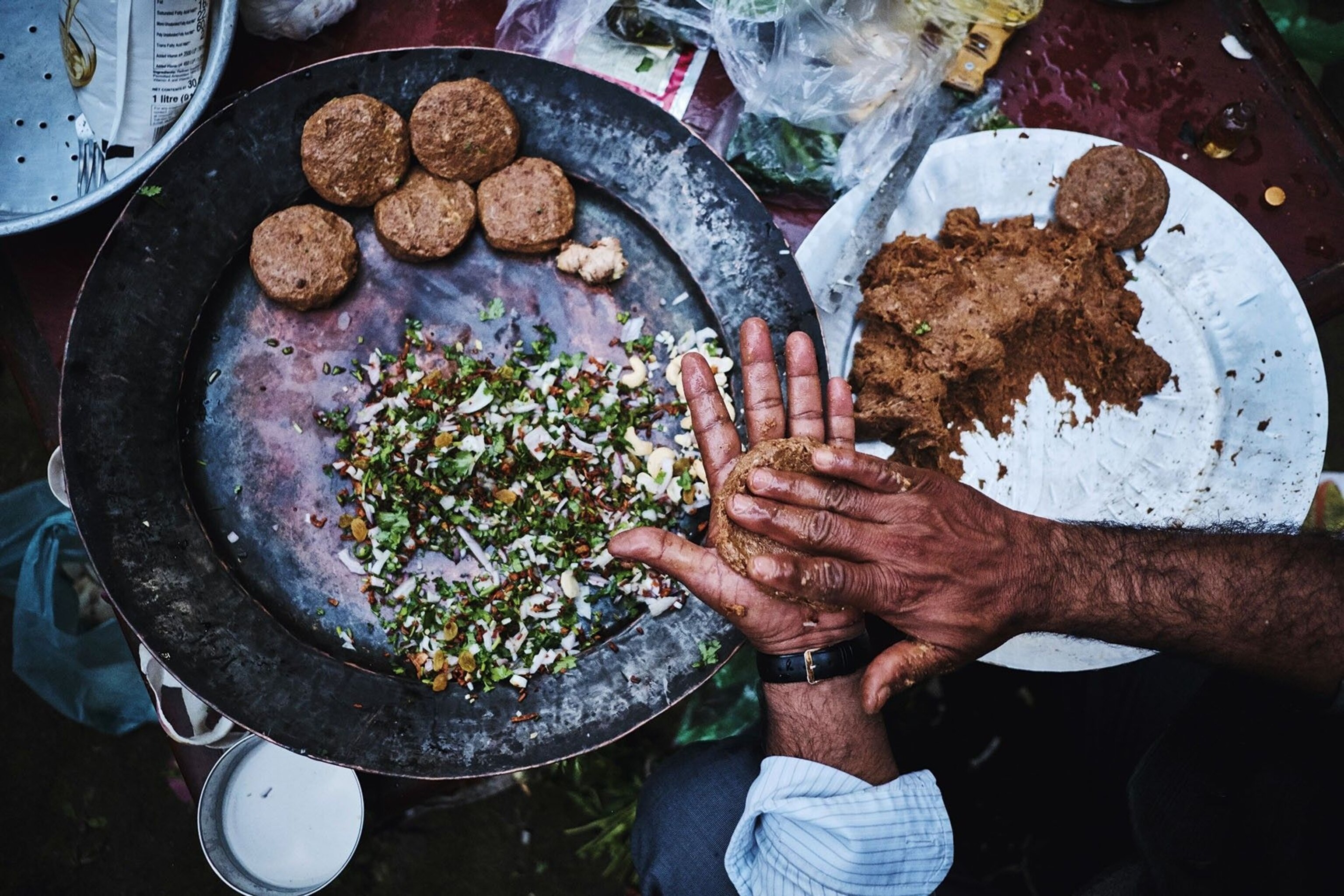
For Mohsin, the kebab is like an ocean: shifting, mysterious, infinite. “You can’t see how many there are or have been, and the further back you go, the more there is to learn.” I sample two vegetarian varieties, one made of yam, the other mango and hung curd (drained yoghurt). Both are exceptional. But mutton galawati is still his crowning glory; Mohsin is confident I won’t taste better in Lucknow, and therefore the world. When I press for reasons why, he emphasises the freshness and range of spices, jari-booti (medicinal herbs) and ittar (perfume essences such as screwpine and rose water). He reels off a list that includes vetiver, stone-flower lichen, pipli (Indian long pepper) and betel leaf. His preferred combination is mace and cardamom. Passionately, he talks up the importance of aroma. “Our Nawabs used to have a lot of nazakat [elegance],” he says. “Like the people, even the food became that way.”
By now I’m ready to taste the galawati, so he sends out four mutton patties lightly charred, with caramelised onion on top, chutney, coriander, lemon and raw onion on the side, and below each one, small discs of ulte tawe ka paratha — milk and saffron flatbreads cooked on an inverted griddle. I pick one carefully, feeling the patty yielding, inhale and take a bite. It’s revelatory, both in the silken texture and the aromas: charcoal; spices that fleetingly reveal themselves. Whereas Tunday’s hits you with a street-fighter’s blow, Mohsin’s greets you like the overture of a great opera: dramatic yet sophisticated, with all the elements of Lucknow’s cuisine concentrated in one pure but unforgettable burst. Later on, in my room at the Lebua, still giddy with it, I order another plate on room service, alongside a glass of red wine.
Legendary status
If one great story of Lucknowi cuisine involves a toothless Nawab’s epicurean fancies, another stems from his benevolence. In 1784, Awadh was devastated by a terrible famine.
To remedy the situation, Asaf-ud-Daula ordered the construction of a sprawling complex, the Bara Imambara. Commoners built by day while the nobility tore it down by night. This went back and forth for years, each day and night of work guaranteeing the proud citizens of Lucknow employment, and therefore food.
To accommodate so many mouths in a time of such scarcity, great pots of rice and meat — biryani — were prepared, sealed with dough and placed on a slow fire to be ‘dum pukht’ (‘breath cooked’). One day, or so the legend goes, the Nawab was passing as the dough was broken and the aroma drifted into the air. So taken was he with the scent that he ordered his servants to take the recipe back to their kitchens, where it was perfected as yakhni pulao, a dish in which yakhni (stock), pulao (rice) and meat pieces are prepared separately before being layered and fire-steamed in a sealed pot.

Late the next morning I’m in the district of Raja Bazar, watching a modern-day recreation of this foundational myth at Idrees Biryani. Its mutton yakhni pulao is the stuff of legend. Owner Mohammed Abu Bakr sits cross-legged on a platform, overseeing operations. Watching the men work with their huge copper vessels (degs) and numerous coal fires, you could easily imagine you were back in Nawabi times.
He tells me they make 10-15kg daily, in three servings, the first at 1pm. Usually they sell out in minutes, but Abu Bakr has no desire to expand. The quality would degrade, he says, and besides, his work is seva (service). He’s not motivated by money; he wants to see people happy and well fed. I see this with my own eyes: as we speak, poor women, old men and street kids come and take portions of free food, — the morning nihari prepared here.
The clock ticks on, the sky threatens rain. Finally, around 12.30pm, the ingredients for mutton yakhni pulao are combined, the great deg is sealed and set above hot coals that sit on the pavement. Expectation and hunger grow as a restless crowd gathers — locals and domestic tourists alike, taking selfies, jostling, warming themselves against the chill, demanding to know when they can eat. Zaheer Alam, senior cook, squats beside the pot, playfully demanding patience. At just past 1pm, the pot is lifted from the fire and carried to Abu Bakr’s perch where it’s opened, the steamed aroma blossoming into the air.
I take my seat on the cramped shared table at the rear and wait for my portion, delivered with raw onion and salan, a mutton gravy. From the first bite, I know they’ve hit the sweet spot — rice that’s aromatic and deliciously moist, yet with each grain perfectly distinct. I stir the gravy and savour each moment, and notice the silence around me; the din from my fellow diners has fallen away. We’ve all been transported to another place, the land of nafasat (sophistication) and nazakat (elegance), the legacy of the Nawabs

Four sweet treats to try in Lucknow
Shahi tukda
This is the Nawab of all desserts (pictured above). It’s made from bread that’s fried, simmered in saffron- and cardamom-infused milk, then garnished with almond, pistachio and silver leaf. Try it at Mughal Zaika and Dastarkhwan in Aminabad, central Lucknow.
Malai makhan
A winter treat, this foam-like mouthful of sweetness is made from boiled milk and cream, cooled and hand-churned overnight. Grab it early morning from various vendors around Gol Darwaza in Chowk.
Bilai ki gilori
This dish resembles paan, the betel leaf and areca nut after-meal stimulant, but tastes of rock sugar and dried fruit, and is encased in cream and silver leaf. Ram Asrey sweet shop (which has branches in both Chowk and Hazratganj) serves the best.
Chai
Sharma Ji Ki Chai is a famous tea stall at Lalbagh crossing in the heart of the city. You’d be crazy not to stop for a glass of the hot sweet stuff.
Essentials
Getting there
Several airlines offer one-stop flights. Jet Airways, Oman Air and Air India all offer indirect flights to Lucknow from Heathrow and Manchester, with the latter also flying from Birmingham.
Where to stay
Lebua Lucknow, the boutique hotel that’s home to Azrak restaurant, has doubles from 7,000 rupees (£76) a night, room only.
How to do it
Steppes Travel offers a 12-day culinary tour of India, with three nights in Lucknow, from £3,645 per person. Includes B&B, international and domestic flights, transfers, guides and some meals.
Published in the June 2019 issue of National Geographic Traveller Food
Follow us on social media
Twitter | Facebook | Instagram
